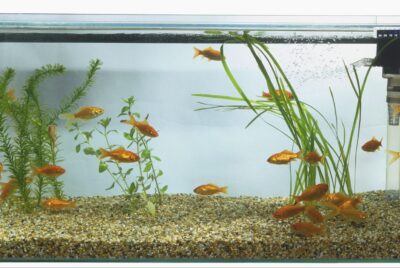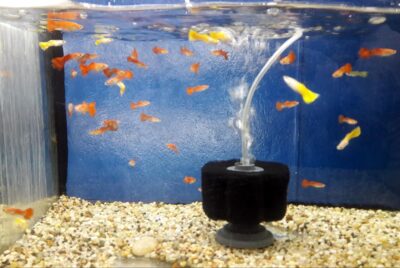How Often to Change Aquarium Filter
As a fellow aquarist and enthusiast, I’m sure you’ve asked yourself this question: how often should you change the aquarium filter? The answer to this isn’t as straightforward as you might think, and that’s exactly what we’ll be exploring in this article.
Why Aquarium Filter Maintenance Matters
An aquarium filter isn’t just a device; it’s a lifeline for our fishy friends. Its condition directly affects the health and happiness of the aquatic life we cherish. So, it’s crucial we understand its importance and treat it with care.
Understanding Your Aquarium Filter
An aquarium filter isn’t just a box filled with media. It’s an intricately designed system that plays a critical role in the health and longevity of your aquarium. Let’s take a more in-depth look at what goes on inside that box and why it’s so important.
Types of Aquarium Filters
There are numerous types of filters, each designed for specific aquarium conditions and needs. Here’s a quick breakdown of the most common types:
- Mechanical Filters: These work by physically trapping debris and particulate matter in the water. They include sponge filters, corner box filters, and hang-on-back filters.
- Chemical Filters: These filters use activated carbon or other substances to remove unwanted chemicals from the water. They’re useful for clearing medication residue, discolorations, and odors.
- Biological Filters: These contain porous material that provides a habitat for beneficial bacteria, which process harmful toxins like ammonia and nitrite. Canister filters and sponge filters can also serve as biological filters.
The Role of Aquarium Filters
Aquarium filters serve multiple functions:
- Physical Cleaning: Filters remove visible debris from the water, keeping the aquarium looking clean and clear.
- Chemical Cleaning: Certain filters remove harmful substances, including chlorine, heavy metals, and medication residues.
- Biological Filtration: The most crucial function, biological filtration, involves the breakdown of harmful waste products like ammonia and nitrites by beneficial bacteria.
Components of an Aquarium Filter
While filter designs may vary, most have several common components:
- Mechanical Media: This is the first line of defense. It catches larger particles and prevents them from clogging other parts of the filter.
- Chemical Media: Placed after the mechanical media, this media catches any dissolved chemicals the mechanical media couldn’t handle.
- Biological Media: This is usually the last stage, providing a home for beneficial bacteria. The bacteria grow in colonies and break down harmful toxins.
Importance of Regular Maintenance
While your filter does a lot of heavy lifting in keeping your aquarium healthy, it needs regular care to function optimally. Regular maintenance, including cleaning and replacement of media, ensures it operates at peak efficiency.
In conclusion, understanding your aquarium filter is essential to maintaining a healthy, vibrant, and thriving aquatic environment. Always remember, a well-maintained filter is a vital part of a happy aquarium.
The Frequency of Changing Aquarium Filters
Determining the frequency of changing your aquarium filter is not as straightforward as setting a calendar reminder. Various factors come into play, and understanding these nuances is key to maintaining a healthy aquarium.
Factors Influencing Filter Change Frequency
Several elements affect how frequently you should change your aquarium filter:
- Type of Filter: The type of filter you use will influence how often you need to change it. For example, sponge filters need to be cleaned more often but replaced less frequently. On the other hand, cartridges in power filters need replacing more regularly.
- Tank Size: The size of your aquarium also plays a role. Smaller tanks often need more frequent filter changes because they can become polluted faster.
- Fish Load: The more fish you have in your aquarium, the more waste is produced, and thus the more often you will need to change your filter. Overstocking can lead to the need for more frequent filter changes.
- Feeding Habits: Overfeeding leads to more waste and leftovers that can clog the filter faster, requiring more frequent filter changes.
Signs That Your Filter Needs Changing
Knowing the signs that indicate your filter needs changing is essential. Some common signs include:
- Reduced Water Flow: If the water flow from the filter has significantly reduced, it might be because the filter media is clogged and needs changing.
- Dirty Filter Media: If the filter media is visibly dirty even after rinsing it, it’s time to replace it.
- Poor Water Quality: If the water is persistently cloudy or has a foul smell, this might indicate that the filter is no longer working effectively and needs to be replaced.
A Note on Filter Cleaning and Replacement
While the frequency of filter changes is important, so is the way you handle the filter media during changes. Always rinse new filter media in tank water to preserve the beneficial bacteria. Never rinse or replace all filter media at once as this can disrupt the balance of beneficial bacteria.
The frequency of changing your aquarium filter is a delicate balance influenced by multiple factors. Understanding these factors and knowing the signs to look out for is crucial to ensure a healthy aquatic environment for your fish. Regular maintenance, including filter changes, is part of responsible fishkeeping.
How to Change Aquarium Filter
Preparations for Changing the Filter – (How Often to Change Aquarium Filter)
Before changing the filter, ensure you have the necessary replacement parts and that your hands are clean to prevent contamination.
Step-by-step Guide to Changing Your Filter – (How Often to Change Aquarium Filter)
Unplug the filter, remove the old media, rinse the new media in tank water (never tap water!), and insert the new media. Then, reconnect the filter and monitor the tank closely for a few days.
Maintaining the Balance: Not Overdoing It – (How Often to Change Aquarium Filter)
When it comes to changing your aquarium filter, it’s important to strike a balance. While regular maintenance is crucial, overdoing it can disrupt the delicate ecosystem of your aquarium. Let’s explore the potential risks of changing filters too often and how to maintain a healthy balance.
The Risks of Changing Filters Too Often
- Disrupting Beneficial Bacteria: Your filter is home to beneficial bacteria that play a vital role in maintaining water quality. Changing the filter too frequently can disrupt these bacterial colonies, leading to an imbalance in the nitrogen cycle. This imbalance can result in ammonia and nitrite spikes, harming your fish.
- Stressing Fish: Frequent filter changes can cause stress to your fish. The process of removing and replacing the filter disturbs the aquarium environment, leading to unnecessary stress on the inhabitants. Stressed fish are more susceptible to disease and may exhibit behavioral changes.
- Altering Water Parameters: Changing the filter too often can lead to fluctuations in water parameters, such as temperature and pH. Sudden shifts in these parameters can be stressful for your fish and negatively impact their health.
Strategies for Maintaining a Healthy Balance
- Monitor Water Parameters: Regularly test and monitor the water parameters in your aquarium. This allows you to gauge the overall health of the system and make informed decisions regarding filter maintenance.
- Observe Fish Behavior: Pay attention to your fish’s behavior and appearance. If they appear healthy, active, and are feeding well, it’s a good sign that your filter maintenance schedule is on track. However, if you notice any unusual behavior or signs of distress, it may be an indication that adjustments need to be made.
- Follow Manufacturer’s Guidelines: Refer to the manufacturer’s recommendations for the specific filter you are using. They often provide guidelines on the appropriate maintenance schedule and filter change intervals based on the filter’s design and capacity.
- Regularly Clean Filter Media: While you may not need to replace the filter media every time, it’s essential to clean it regularly. Rinse the media in tank water to remove debris and maintain optimal flow.
- Consider the Overall Aquarium Maintenance: Changing the filter is just one aspect of aquarium maintenance. Ensure you’re also performing regular water changes, cleaning the substrate, and monitoring other equipment, such as heaters and air pumps. A holistic approach to maintenance helps maintain a healthy and balanced aquarium ecosystem.
Optimizing Aquarium Health – (How Often to Change Aquarium Filter)
Complementing Filter Changes with Other Maintenance Activities
Changing the filter is just one aspect of aquarium maintenance. Regular water changes, correct feeding, and monitoring water parameters are equally crucial.
Conclusion
Determining how often to change your aquarium filter can be a balancing act. It depends on multiple factors and understanding them can ensure a thriving environment for your aquatic pets.
Frequently Asked Questions
Q: How often should I clean my aquarium filter?
A: Aim for a clean every 2-4 weeks, but this may vary based on the factors discussed above.
Q: Can a dirty filter kill fish?
A: Yes, if left unchecked, harmful toxins can build up, causing harm to your fish.
Q: What happens if I change the aquarium filter too often?
A: You risk eliminating beneficial bacteria, disrupting the nitrogen cycle and potentially causing harm to your fish.
Q: Should I change the filter media all at once?
A: No, it’s best to change parts of the filter media at different times to maintain a stable environment for beneficial bacteria.
Q: What other maintenance activities should I perform?
A: Regular water changes, monitoring water parameters, and correct feeding are some of the other vital activities.




